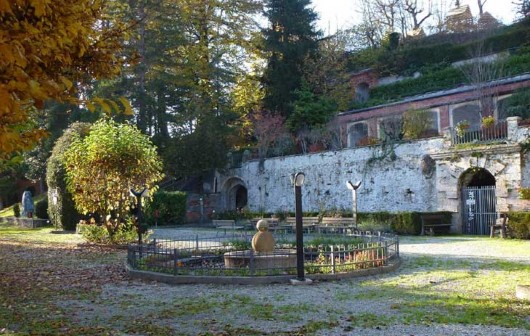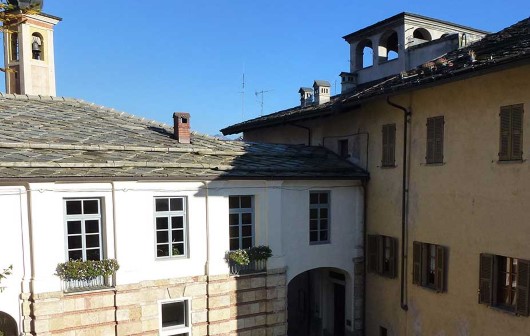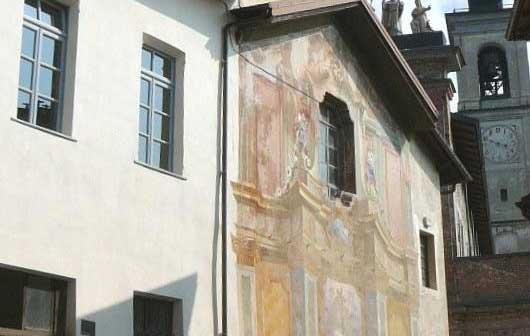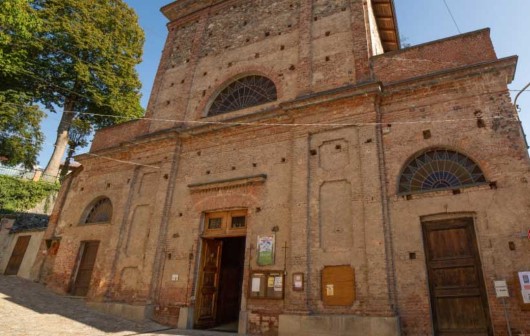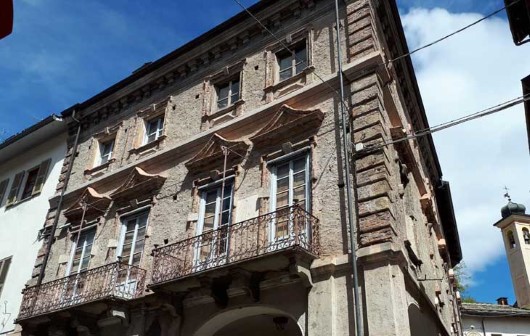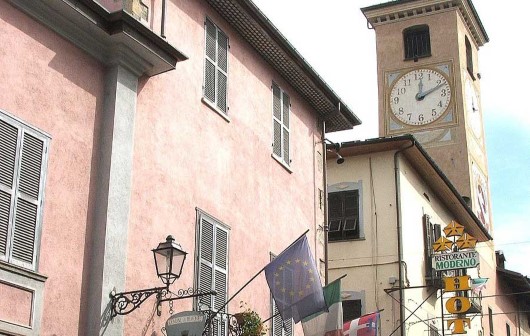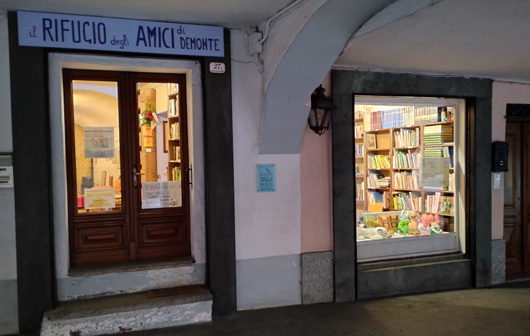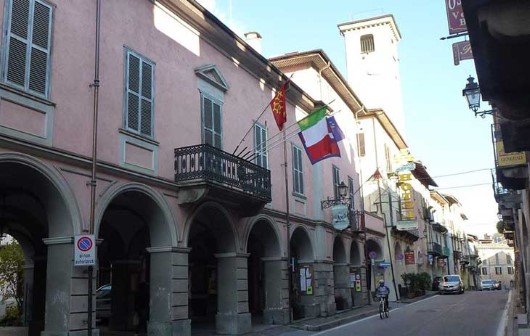Church of St. John the Baptist
In Demonte there was once a Court of Justice, that could pass death sentences.
The members of the Brotherhood of St. John the Baptist comforted the condemned and assisted their widows and orphans.
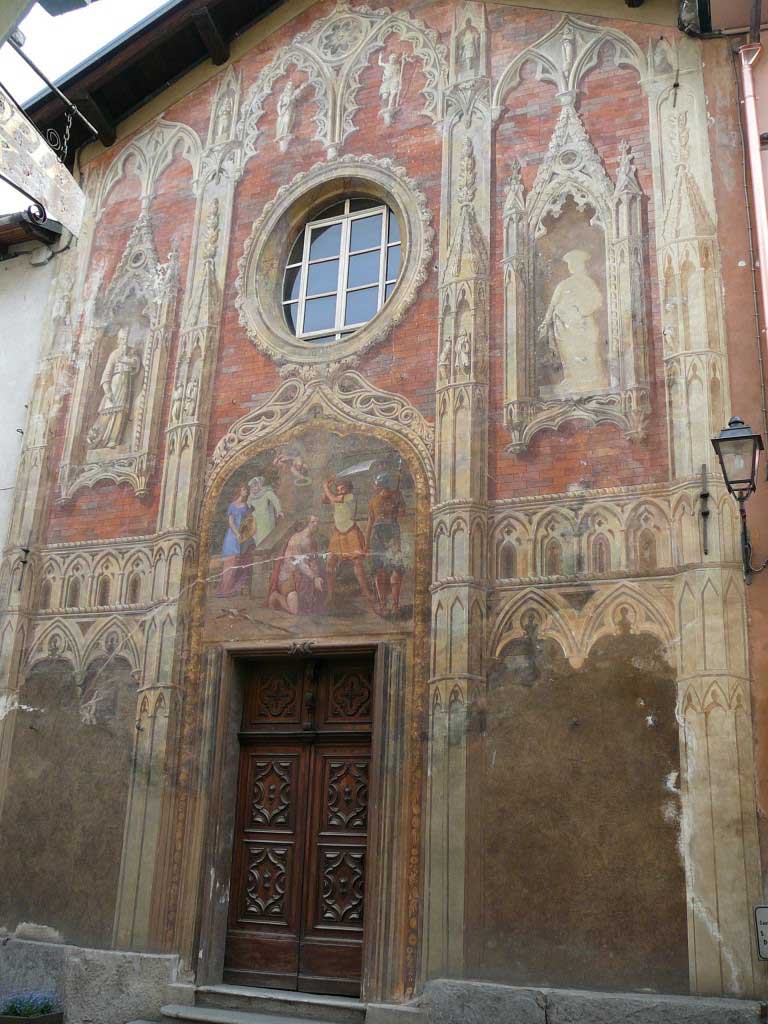
Around 1600 the present church was built. Here was the base of the Confraternita dei Disciplinati Neri (1627), who worshipped at the main altar of St. John the Baptist.
In 1640, the church was put at the disposal of the Capuchin friars arrived in Demonte a few years before in order to fight the Protestant heresy. The Capuchins used it for over 70 years until they had a church of their own (1714).
When the need of assistance to the condemned gradually decreased, the Society of the Holy Trinity became more important. It had the task of collecting money to pay ransoms for the Christian prisoners of the Muslims.
In the past two centuries, the church became almost exclusively the base of the Brotherhood of St. Elizabeth.
The simple gabled structure of the façade was decorated at the end of the XIX century in neo-Gothic style, with a fresco of "St. John's beheading". On the sides, there are two painted niches with the figures of St. Zachary and St. Elizabeth, his parents.
The Visit
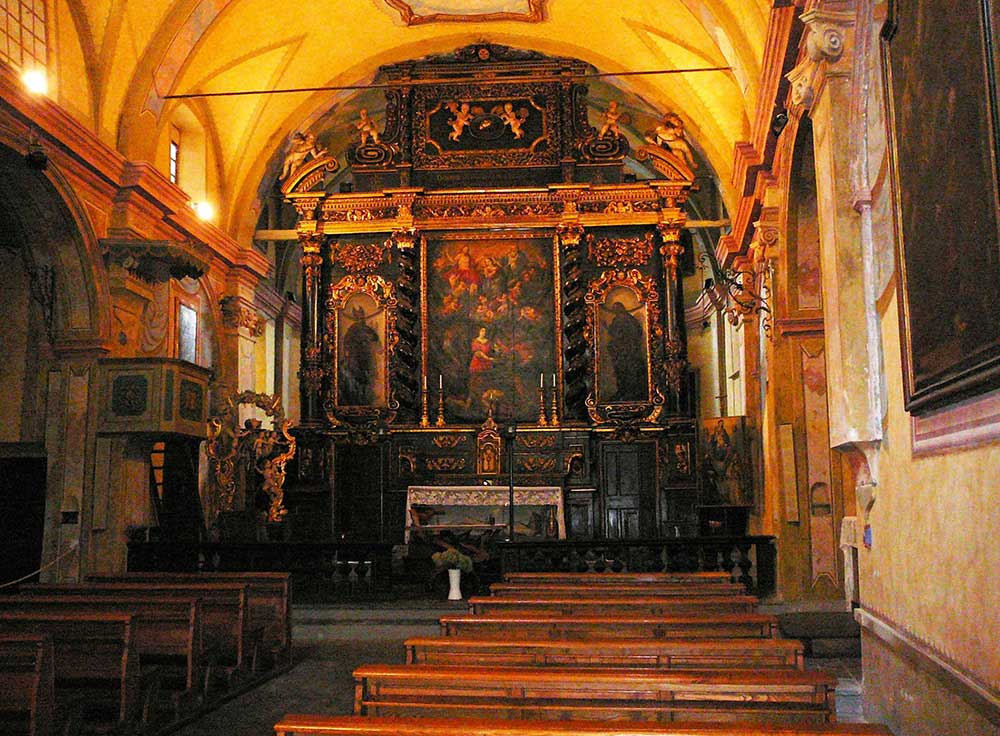
The interior offers a single nave with a barrel vault with lunettes; along the walls there are two small chapels. The altarpiece above the high altar stands out, completely closing the space, hiding the choir in the apse at the rear.
On entering, on the right there is the standard of the Society of the Holy Trinity. On one side the "Trinity crowning the Virgin and two Penitents" is depicted in the foreground, while on the other side is painted "The Beheading of St.John the Baptist".
In a niche with a gilded wooden frame there is a wooden statue of Our Lady of Sorrows by the Genoese G. Chiappori (1847).
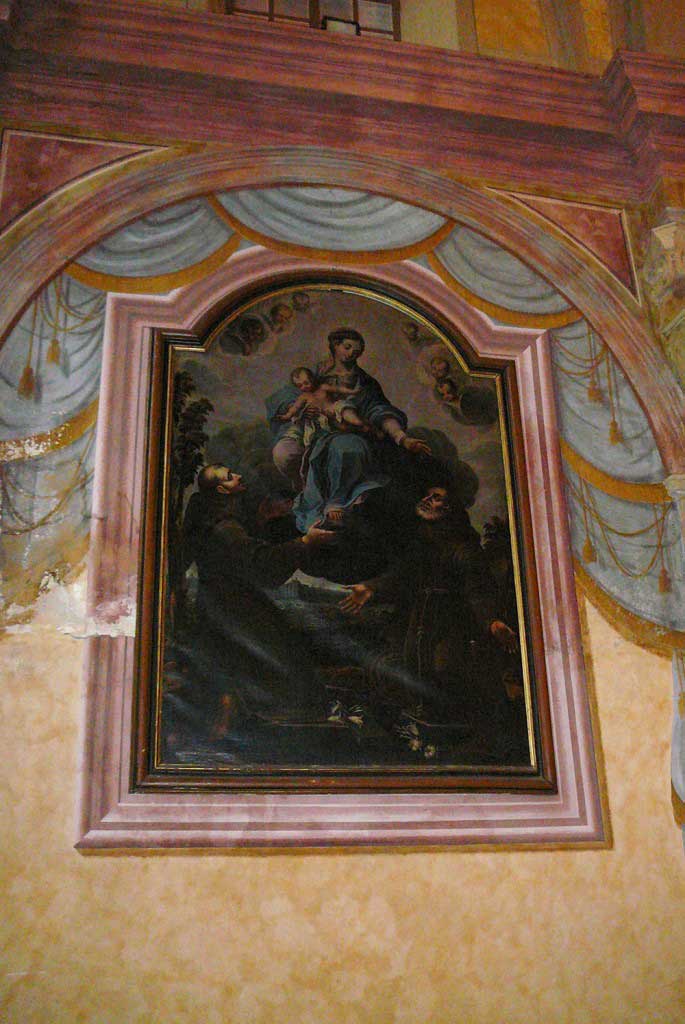
Further along, a canvas of 1731 representing "The Virgin with Child and two Capuchins" (attributed to the painter Botta from Cuneo) recalls the presence of the Capuchins in Demonte in the XVII century.
The masonry altar in the chapel of Our Lady of Sorrows is topped by a wooden altarpiece in the classical style. On the sides, over the standard of the Society of Our Lady of Sorrows, there is a canvas of "The Marriage of the Virgin", as well as other pictures, among them a "The Madonna and Child with St. Francis, St. Claire, St. Elizabeth and St. Anthony of Padua".
The Presbytery and the High Altar
On the left side of the Presbytery, above the wooden pulpit, there is a painting of the "Baptism of Jesus" and a wooden group representing "Little angels holding the head of the Baptist" (XIX century). On the right side, the standard of the Disciplinati Neri and an XVIII century walnut pew with a carved back rest representing "The head of John the Baptist on a platter"; above it a saint of the Trinitarian Order with the typical red cross on his chest is painted.
Under the wooden table of the high altar, in a display case, there is a statue of the dead Christ (XVII century).
The imposing wooden altarpiece, (XVIII century) takes up the entire back wall of the presbytery. In the middle, between two twisted columns, "The Martyrdom of St. John the Baptis" is painted, while in the upper part "Our Lady crowned by the Holy Trinity" is depicted. Two other paintings portray St. Zachary and St. Elizabeth.
In the Sacristy, in large display cases can admire vestments of the XVIII and XIX centuries.
From the Presbytery it is possible to enter the Choir, a semi-circular vaulted room Behind the altar a safety glass case contains a few reliquaries .
The altar of St. Elizabeth is in carved and gilded wood. The altarpiece is flanked by two columns supporting a trabeation. In a niche there is the gilded wooden statue of St. Elizabeth of Hungary, patron saint of the Humiliate.
In the next wall, there is a canvas, similar to the one in front of it, depicting "A Capuchin in ecstasy in front of Christ and the Virgin".
Visit all the Itineraries of Demonte
Parco Borelli
The gardens lie on the Quaternary hill where, from about 1250, stood the Angevin castle where the Bolleris lived from 1377 [ . . . ]
The Galleria Carlo Alberto and the Small Mansion
The Galleria Carlo Alberto (XIX century) links the Borelli mansion to the garden; it was built by Count Giacinto Borelli [ . . . ]
Church of the Holy Cross
The Confraternity of the Holy Cross and of St. Sebastian was established In 1540 so presumably the church was build approximately at this date [ . . . ]
Parish Church of St. Donatus
The church of St. Donatus is first mentioned in a document dated 1332. It became parish church in the course of the XIV century [ . . . ]
Palazzo Bolleris / Borelli
The history of Palazzo Bolleris (now Borelli) starts in 1606 when Marquis Gaspare Bolleris built a mansion at the foot of the feudal castle [ . . . ]
Town Hall Municipal Tower Porticoed Street
The town hall the medieval civic tower and the porticoed street are interesting in particular from a historical and architectural point of view [ . . . ]
Church of St. John the Baptist
The members of the Brotherhood of St. John the Baptist comforted the condemned and assisted their widows and orphans [ . . . ]
About Us
Formed in 2010, pursues, in its institutional purposes, the preservation and development of the historical and architectural [ . . . ]
Contacts
For further information, please don't hesitate to contact us
Association of Friends Demonte





